There are significant benefits to moving some decisions in smart HVAC systems close to the application and away from the cloud.
Asem Elshimi, Silicon Labs
We’ve probably all experienced an office environment that always felt too cold or hot no matter the weather. And we’ve all experienced the fruitlessness of asking the building facilities team for help. The problem: Making the environment a bit more comfortable for you would make the temperature in the rest of the office uncomfortably warm or cold.
An emerging set of smart building technologies called zoning systems could consign this dilemma to the dustbin of history. Zoning systems are a set of smart building technologies that handle a lot more than just room temperature. Additionally, they accommodate humidity, CO2, ventilation, purification, and more. And they adjust the environment in different areas of the same building based on occupant or operator preference. By using multiple thermostats, active vents and active ductwork dampers, zoning systems allow users to create granular temperature zones and control HVAC settings room by room. These systems enhance occupant comfort and can also unlock tremendous energy savings.
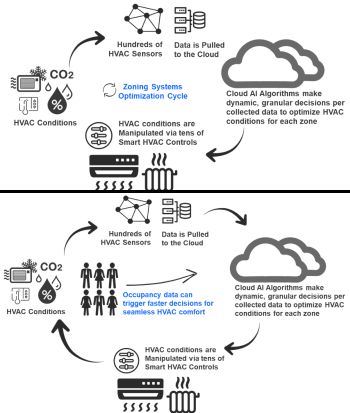
While an office that is slightly too cold or too warm may seem like a minor inconvenience, studies have shown that room temperature significantly affects the productivity of office workers. In 2006 the Berkeley National Lab studied the effects of temperature on office work performance. Researchers found that performance rates rise when temperatures are between 21 and 22°C and drop when temperatures are above the 23 to 24°C range. Moreover, with the highest productivity is at 22°C. Further, the study showed that at a temperature of 30°C, worker performance dropped by 8.9%.
Another recent study found that offices that are too cold can halve employee output; at offices that are too warm, attendance drops by 18% and project turnaround times rise by 13%.
Temperature stability across a building is only one dimension of zoning systems. Other HVAC conditions like CO2 levels correlate directly to the well-being of building occupants. According to a 2016 study by the Harvard School of Public Health, high CO2 levels in buildings can degrade thinking and decision making, thus reducing worker performance and harming a company’s bottom line.
Zoning systems use hundreds of HVAC sensors that collect
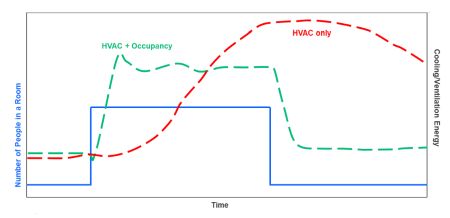
granular data about the conditions in every room in a smart building. Wireless SoCs and backend gateways then push this data into the cloud, where cloud AI algorithms make dynamic and granular decisions per the collected data.
These decisions are fed back to smart HVAC controls that fine-tune temperature, humidity, and air flow in various zones (based on decisions made by the cloud AI). The result is optimized comfort and reduced energy consumption through elimination of over-cooling, over-heating and over-ventilating. A system that maintains optimal temperature and humidity levels will always consume less energy.
It is worth emphasizing that these zoning systems depend on wireless technology. Unlike conventional HVAC systems that use only a limited number of sensors (mostly a few thermostats per floor), there are hundreds of sensors monitoring HVAC conditions and collecting granular, detailed and dynamic data sets in zoning systems. The considerable number of sensors required make it impractical to run wires for every single sensor. Also, a considerable amount of trial-and-error goes into determining the best location for each sensor node. Wireless sensors tend to be cheaper and offer the installer flexibility. Additionally, wireless sensors can be moved to optimize conditions for the best experience, important when office spaces are designed to be adjustable without static walls. The dynamic nature of partitioned office spaces means that the boundaries between zones also should remain flexible. The best way to maintain flexible boundaries is by using battery-based wireless sensors.
Zoning + occupancy
The downside of the optimization cycle is that it is extremely slow and energy demanding; it is common knowledge how long it takes and how expensive it is for an air conditioner to cool a room by a few degrees. But datasets on occupancy can also improve smart HVAC system energy efficiency and help mitigate the problem. For example, a crowded conference room can get warm quickly, just as an open office area with high ceilings can rapidly get chilly (because warm air rises and people are closer to the floor). Occupancy and people-flow information enables cloud-based algorithms to more quickly adjust the HVAC controls. Thus, when a meeting room grows crowded, the algorithm can immediately trigger faster cooling and ventilation before things heat up, leading to a constant 21°C temperature across the building.
Information about the dynamic changes in room occupancy and people flow speeds HVAC response time, greatly reducing the energy consumed for cooling and ventilation. Considering that buildings consume close to 40% of global energy, this energy savings directly enhances environmental sustainability.
Occupancy-enabled zoning systems
With the COVID-19 pandemic fostering the rise of hybrid work policies, occupancy-enabled zoning systems are becoming particularly useful for office environments. With desks and conference rooms empty as much as 50 to 60% of the time, energy for heating and cooling is needlessly being used for people who are not there. But occupancy-enabled zoning systems can eliminate such waste. Sensors are strategically placed around buildings to detect motion and adjust room temperature with the help of the HVAC control system. When occupants leave an area, the system goes to a stand-by state with minimal cooling/heating/ventilation, ensuring energy is not spent on cooling unoccupied spaces.
While maintaining a stable, comfortable temperature is a great convenience, keeping the air that we breathe clean and healthy has become mandatory since the COVID-19 outbreak. The global pandemic has hit the HVAC market from both the demand and the supply sides. An influx of regulations dictating cleaner air inside buildings has led to expedited upgrade cycles to improve the purification and ventilation that HVAC systems provide.
Many manufacturers view these mandates as an opportunity to upgrade their HVAC system technologies with smart features. This is one reason the global HVAC systems market is expected to grow at a compound annual growth rate of 5.9% from 2021 to 2028 (though another reason is mushrooming energy costs, making it easier to justify expenditures for energy efficient technologies).
On the other hand, the pandemic-stirred supply shortage has slowed new installations. Strategically viewed, the supply shortage is an opportunity for manufacturers and vendors to spend time optimizing their technological offerings.
On the edge
Look up edge computing on Wikipedia and you’ll find it defined as a distributed computing paradigm that brings computation and data storage close to the sources of data, the point being to improve response times and save bandwidth. The Wikipedia entry goes on to say there are common misconceptions about what constitutes the “edge.” One is that edge and IoT are synonymous. In fact, edge computing is a topology- and location-sensitive form of distributed computing, while IoT is a specific instance of edge computing.
As the leader in wireless SoCs, Silicon Labs say the network’s edge is in the processing at the sensor level; the edge lies alongside the sensed phenomena. However, this is merely one characterization. There are significant benefits to moving AI computations even further from the cloud.
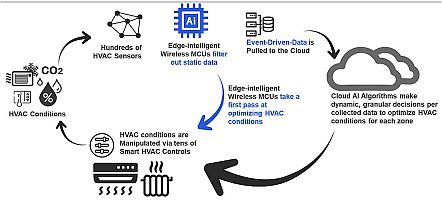
Similarly, zoning systems are good candidates for edge intelligence because they are close to sensed environments. They can make use of edge-intelligent wireless MCUs–wireless SoCs capable of running AI models with optimized power consumption and at a reasonable speed. These SoCs have two major benefits: faster decentralized decision making and reduced data traffic by eliminating static data flow.
To understand these benefits, we need to look at the improvement an edge AI can offer versus a regular MCU. Generally, an AI accelerator can use data to help make decisions about applications quickly and with high confidence while using much less power. The key word here is confidence. It means an AI application can detect an anomaly or perturbation in an environment and classify it into a preset category with confidence. With an AI accelerator-equipped SoC, AI applications can make more reliable and efficient decisions at the edge without the need to relay any information to the cloud.
In zoning systems, this means that AI-powered applications running on wireless MCUs can make spontaneous decisions based on disturbances in HVAC conditions and changes in occupancy. Making these decisions locally significantly reduces the optimization cycle response time. In addition, it allows the system to run first-order optimizations without sending data to the cloud, enhancing data privacy and security. And this localized decision-making minimizes problems resulting from the building backend going offline.
Furthermore, because AI-powered applications can make reliable judgments locally, they can filter out static data transmission to the cloud. To appreciate this benefit, we need to understand that in the absence of edge AI, cloud-based HVAC systems forward all sensed data–including that collected during stand-by–to the cloud for decision-making. Sensors transmit to the cloud even when nothing happens. These constant transmissions are tolerable with conventional HVAC systems using a handful of sensors. But each zoning system can put hundreds of sensors online; the flow of data from millions of sensors to the cloud every few milliseconds would swiftly overload the network.
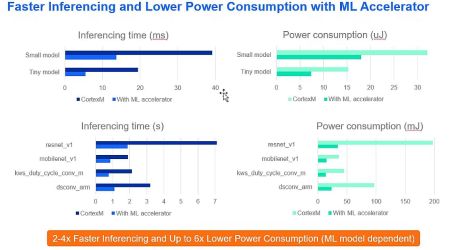
AI accelerators can reduce this data traffic problem. They have the computing horsepower to filter out static data that sensors generate and reliably make a judgment call on whether there’s been a change, and then only send event-driven data to the cloud. Such filtering reduces network traffic and the use of cloud resources. Building operators particularly benefit from this strategy because it minimizes charges they pay to cloud operators.
Why run AI applications on the wireless SoC? One reason is it minimizes the cost of upgrading to wireless and intelligent technologies. Processors in HVAC systems are busy running HVAC equipment applications under heavy safety constraints. Hence, a wireless SoC powered by an AI accelerator can add zoning without putting a strain on the existing HVAC computing facilities.
Zoning technologies are set to be major life-easing IoT applications. Within a decade or so, it’s likely we will become as familiar with smart vents as we are with smart lights.



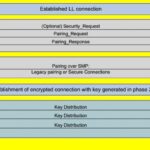


Leave a Reply